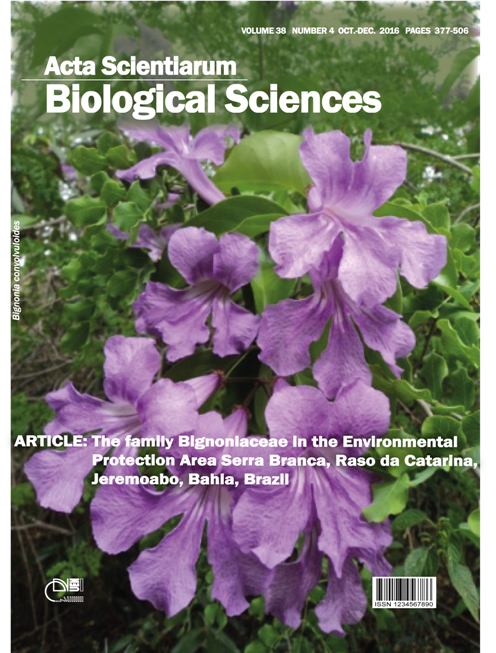<b>Cannibalism among <i>Myrmeleon brasiliensis</i> larvae (Návas, 1914) (Neuroptera, Myrmeleontidae)
Abstract
Cannibalism is influenced by various intrinsic and extrinsic factors of the population, such as density, population structure, prey availability, habitat structure and famine. These factors acting either independently or in synergy determine the frequency of cannibalism. The aims of the present study were to evaluate the effect of density and food availability on the occurrence of cannibalism among Myrmeleon brasiliensis larvae (Neuroptera, Myrmeleontidae). In the present study, the occurrence of cannibalism among M. brasiliensis larvae was greater in the treatments that simulated an absence of food in situations of both high and low density. The search for food makes a larva move about to forage, thereby increasing the risk of falling into the trap of a neighboring larva. Thus, the cannibalistic behavior of M. brasiliensis larvae may be associated with opportunity rather than a direct attempt to pray on the same species.
Downloads
DECLARATION OF ORIGINALITY AND COPYRIGHTS
I Declare that current article is original and has not been submitted for publication, in part or in whole, to any other national or international journal.
The copyrights belong exclusively to the authors. Published content is licensed under Creative Commons Attribution 4.0 (CC BY 4.0) guidelines, which allows sharing (copy and distribution of the material in any medium or format) and adaptation (remix, transform, and build upon the material) for any purpose, even commercially, under the terms of attribution.
Read this link for further information on how to use CC BY 4.0 properly.












1.png)




3.png)













